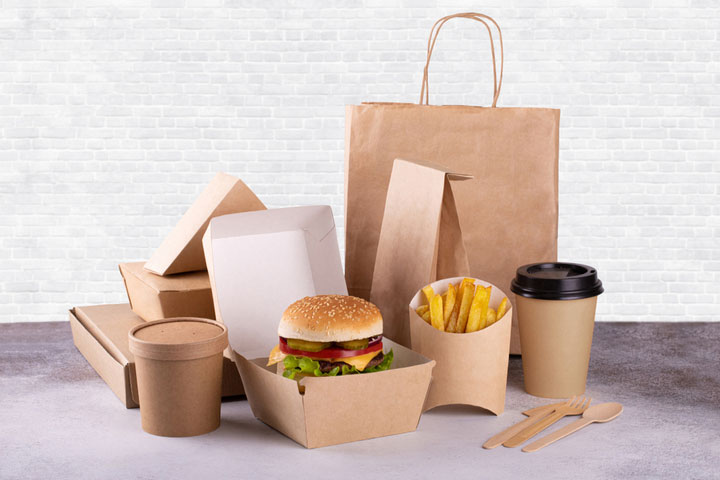In the constant quest for a greener planet, biodegradable food packaging has emerged as a trending solution in the food industry. It comes with promising benefits, but like any innovation, it also has its own set of drawbacks. Let us look at both sides of the coin.

The Advantages of Biodegradable Food Packaging
1. Environmental Friendliness
Probably the most significant advantage of biodegradable food packaging is that it is not harmful to the environment. Traditional food packages, especially plastic-type packages, can take hundreds of years to break down. This leads to large volumes of landfill, ocean, and other ecosystem waste.
Biodegradable packages, on the other hand, break down much more easily. For instance, polylactic acid (PLA)—a material made from renewable resources like sugarcane or corn starch—can decompose within months to years, depending on environmental conditions.
A study by The Ocean Cleanup estimated that plastic waste in the ocean is a serious threat to marine life, affecting millions of animals annually. Biodegradable packaging reduces this problem, as it breaks down into natural substances and is less harmful to wildlife.
2. Renewable Resource Utilization
Biodegradable food packaging is generally made from renewable resources such as plant-based polymers, cellulose from wood pulp, and starches. These materials have a much shorter renewal cycle compared to fossil fuels.
An example is bamboo, a fast-growing plant that can be used to produce packaging. It grows much faster than trees used for conventional paper and is a sustainable alternative. Using such resources supports industries focused on sustainable forestry and agriculture.
3. Consumer Appeal
Today’s consumers are more environmentally conscious than ever. A survey by a leading market research firm found that nearly 65% of consumers are more likely to purchase food products packaged in biodegradable materials.
Brands using biodegradable packaging gain a competitive edge, boost their brand image, and appeal to eco-conscious consumers, potentially leading to greater customer loyalty and repeat business.
The Disadvantages of Biodegradable Food Packaging
1. Higher Costs
One major drawback is the higher cost of production. The manufacturing of biodegradable materials involves more complex processes and expensive raw materials. For example, producing PLA involves fermenting crop sugars into lactic acid, which is then polymerized—a costlier process than conventional plastic production.
These increased expenses may be passed on to consumers, making biodegradable-packaged products more expensive and potentially less appealing to price-sensitive buyers.
2. Performance Limitations
Biodegradable packaging often falls short in functional performance. It may provide weaker barriers to oxygen, moisture, and light compared to traditional plastic, affecting the shelf life of food.
For example, fresh fruits and vegetables stored in biodegradable plastic tend to spoil faster due to higher oxygen permeability. Additionally, such packaging may be less durable, more prone to tearing or breaking during transport, leading to food waste and financial loss.
3. Inconsistent Degradation Conditions
The breakdown of biodegradable materials relies on specific environmental conditions—temperature, moisture, and microorganisms. In anaerobic landfill environments, the degradation process can be significantly slowed.
If biodegradable packaging is improperly disposed of—such as being sent to an incinerator or non-composting landfill—it may not degrade at all, defeating its intended environmental benefits.
Conclusion
Biodegradable food packaging holds great promise for a more sustainable future, but it’s not without limitations. As demand grows, continued innovation and research are necessary to lower costs, improve performance, and ensure effective decomposition.
By working together—consumers, manufacturers, and scientists—we can help make biodegradable packaging a more viable solution for the planet. It’s a step forward, but one that must be taken with careful planning and commitment to improvement.
